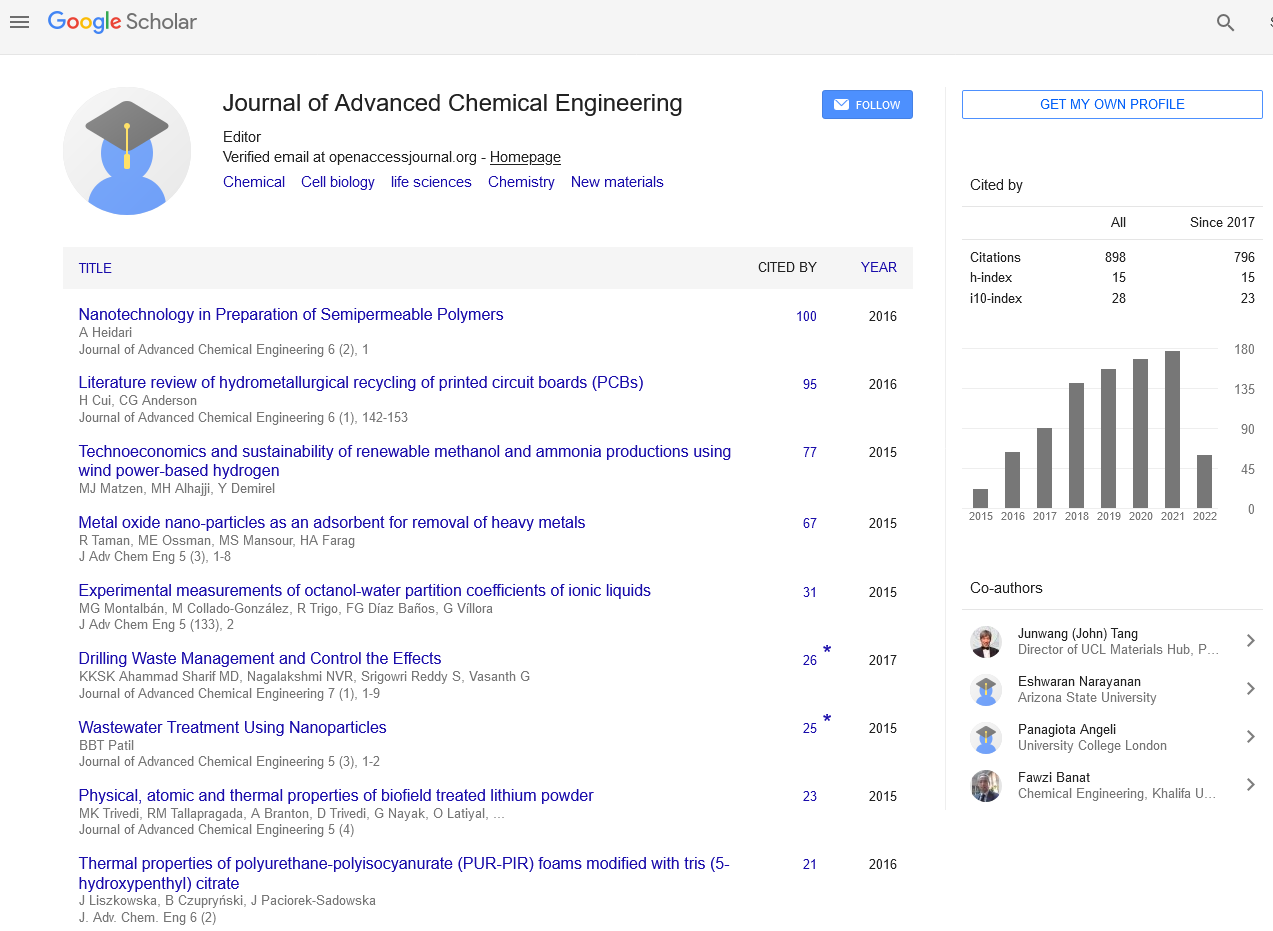Indexed In
- Open J Gate
- Genamics JournalSeek
- Smithers Rapra
- RefSeek
- Directory of Research Journal Indexing (DRJI)
- Hamdard University
- EBSCO A-Z
- OCLC- WorldCat
- Scholarsteer
- Publons
- Geneva Foundation for Medical Education and Research
- Google Scholar
Useful Links
Share This Page
Journal Flyer

Open Access Journals
- Agri and Aquaculture
- Biochemistry
- Bioinformatics & Systems Biology
- Business & Management
- Chemistry
- Clinical Sciences
- Engineering
- Food & Nutrition
- General Science
- Genetics & Molecular Biology
- Immunology & Microbiology
- Medical Sciences
- Neuroscience & Psychology
- Nursing & Health Care
- Pharmaceutical Sciences
Abstract
Synthesis and characterization of co-poly acrylamide-diallyaimethyl ammonium chloride
Fatemeh Majidi Arlan
Water-soluble cationic co-polymers of acrylamide and diallyldimethyl amoninum chloride was synthesized via free radical polymerization in the presence of Ce (NH4)2(NO3) as an initiator. Synthesized co-polymers were characterized by FTIR, 1H NMR and TG/DSC analyses. Cationic polyacrylamide (CPAM) is a kind of synthetic organic compound with excellent sludge dewatering performance. Cationic polyacrylamides, ammonium-based polymers, poly(allyldimethyl-ammonium chloride), and epichlorohydrin/dimethylamine-based polymers are the most common CPEs used as coagulation and flocculation agents cause they are economical and water-soluble with tunable charge densities at high molecular weights. Free radical polymerization, step-growth polymerization, and post-polymerization modification methods afford each polymer system. CPEs are used for water treatment, anti- microbial materials, and non-viral gene delivery. The cationic degree (CD) is closely related to the electrical neutralization performance of CPAM. Besides, CD can also affect the morphology of CPAM in aqueous solution.
Published Date: 2020-09-26; Received Date: 2019-11-06


